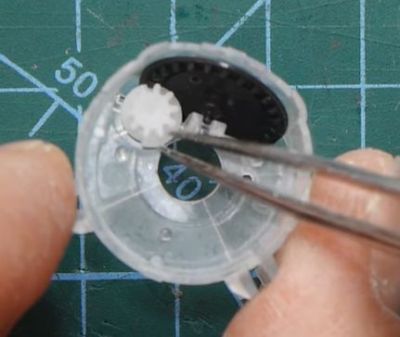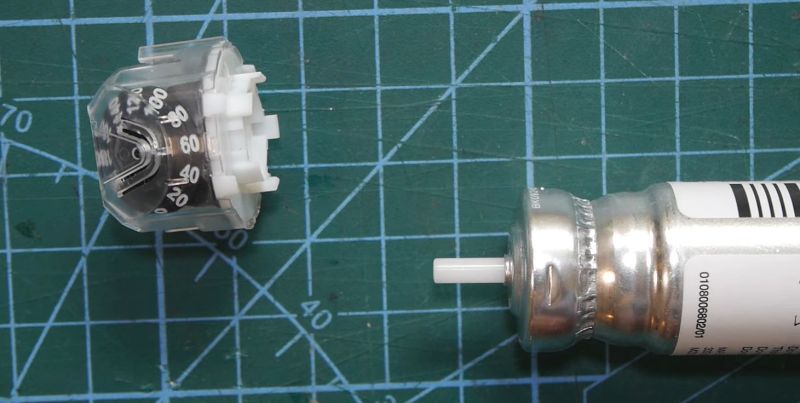
Recently [Anthony Francis-Jones] decided to take a closer look at the inhaler that his son got prescribed for some mild breathing issues, specifically to teardown the mechanical counter on it. Commonly used with COPD conditions as well as asthma, these inhalers are designed to provide the person using it with an exact dose of medication that helps to relax the muscles of the airways. Considering the somewhat crucial nature of this in the case of extreme forms of COPD, the mechanical counter that existed on older versions of these inhalers is very helpful to know how many doses you have left.
Disassembling the inhaler is very easy, with the counter section easily extracted and further disassembled. The mechanism is both ingenious and simple, featuring the counter wheel that’s driven by a worm gear, itself engaged by a ratcheting mechanism that’s progressed every time the cylinder with the medication is pushed down against a metal spring.
After the counter wheel hits the 0 mark, a plastic tab prevents it from spinning any further, so that you know for certain that the medication has run out. In the video [Anthony] speculates that the newer, counter-less inhalers that they got with the latest prescription can perhaps be harvested for their medication cylinder to refill the old inhaler, followed by resetting the mechanical counter. Of course, this should absolutely not be taken as medical advice.
















“COPD conditions like asthma”
Asthma is not considered a COPD condition.
Asthma and COPD are different entities in terms of etiology, pathofysiology, prognosis and treatment. Pulmonary conditions like asthma would have been more accurate.
You’re correct, although it appears that they can often coexist in the same patient, which is probably where some confusion exists. I have corrected the text to hopefully better reflect reality :)
Am I the only one that has noticed that instead of delivering 200 metered doses, these inhalers actually run out half way through?
The simple looking counting mechanisms in these devices are required by the FDA to be extremely reliable, as for a “relief” asthma medication showing that there are doses left when it’s empty would be quite serious.
They have a short guidance document explaining.
https://www.fda.gov/files/drugs/published/Integration-of-Dose-Counting-Mechanisms-into-MDI-Drug-Products.pdf
Probably not empty. Most likely plugged up. Never had one yet that didn’t need to be cleaned out by less than halfway used.
The counter wasn’t added to better meter dosage or provide safety in the case of running out, it was to re-up a patent and allow them to continue price gouging for a now extremely cheap and common life-saving drug.
It’s not “newer vs older” when it comes to the counter wheel. I got an inhaler over two years ago with no counter, meanwhile every one I’ve gotten since then has one. It’s about whether you buy one with a counter or not.
I’ll bet you could make a neat usage counter out of vape guts…
Hehe! Brilliant.
I sense a theme here with six salvaged Asthma counters, a vape processor and a combined entry to the 2026 Hackaday “One Hertz x Component Abuse challenge” melded with some 3D printing and a little electronics-fu to make a recycled clock.
anyhow, these counters probably cost just weigth them. Every puf is 0.03 grams
(a 0.01 gram precision scale cost 2 euro’s on aliexpress)
2>a counter used by Knitters.
(available at ali for about 20 cents)
press the button after every puff.